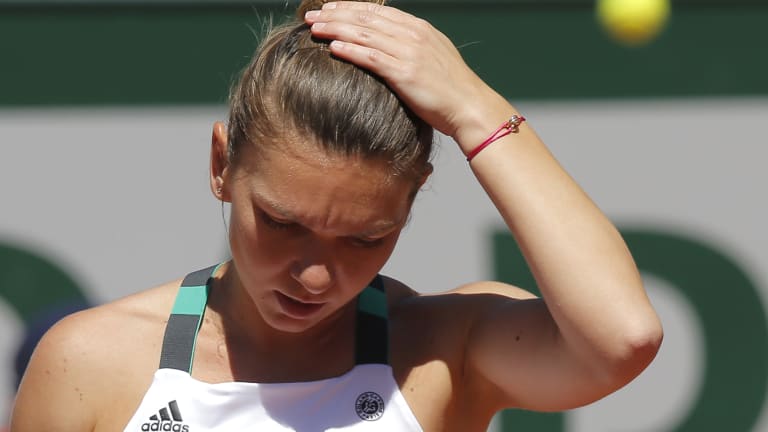Ostapenko was right, and the pattern held through the third set. Again, she got down early and appeared to be just a point or two from defeat. This time Halep went up 3-1 and served for 4-1. Again, Ostapenko broke with a return-of-serve winner, and held with a crosscourt backhand winner. In that game, at 30-30, she also came up with a rare ace down the T just when she needed it.
Then, at 3-3, fortune smiled on Ostapenko and gave her title run its final blessing. With Halep serving at 30-40, break point, Ostapenko hit a backhand that was heading wide, until it clipped the tape and somehow bounced back into the singles court for a winner.
With fate smiling on her, and Halep in a daze, Ostapenko ran away with the last two games. She finished the match the only way she could: on her first championship point, on the first shot, she aimed for the corner with a backhand return, and found it.
“Everything is amazing,” was how Ostapenko summed up her last two weeks. Her first career title is a Grand Slam title.
No loss could have stung more for Halep. After succeeding with a patient, grinding style for a set and a half, she couldn’t adjust and swing away when that tactic stopped working. Her misses at 0-3 in the second, those seemingly innocent misses that led to her downfall, reminded me of the way Guillermo Coria missed on his two match points in the 2004 French Open final. He was a little late on two shots he would normally make; it was as if the pressure of the moment had added an extra weight to his legs and his racquet. Halep’s mistakes, and her loss, felt the same. While the 20-year-old Ostapenko played with ease and freedom, the 25-year-old Halep, who was the tentative favorite throughout the tournament, was just a little too weighed down by nerves to hit out and play her best.
Always honest, she admitted as much in her gracious trophy speech.
“Maybe I wasn’t ready to win it,” Halep said.
“Let’s keep working,” she told her somber team in the stands. “Let’s believe.”
Let’s hope she can.
What should we hope for from Ostapenko going forward? More of the same, right away? While she’s here to stay, and a star in the making, there will be downs to go with her ups in the immediate future. But it’s too soon to worry about them now.
For now, we have the memory of a young player who wasn’t afraid to embrace the moment and take a major final into her own hands. In that final backhand return, which rifled down the line and touched down in the corner, we have the memory of what she did with that moment. It wasn’t perfection that brought Ostapenko there; it was having the faith that only by living with her flaws would she find her strengths. Her faith, and her bravery, were rewarded.
The Tennis Channel team at Roland Garros looks back their pre-tournament picks:
